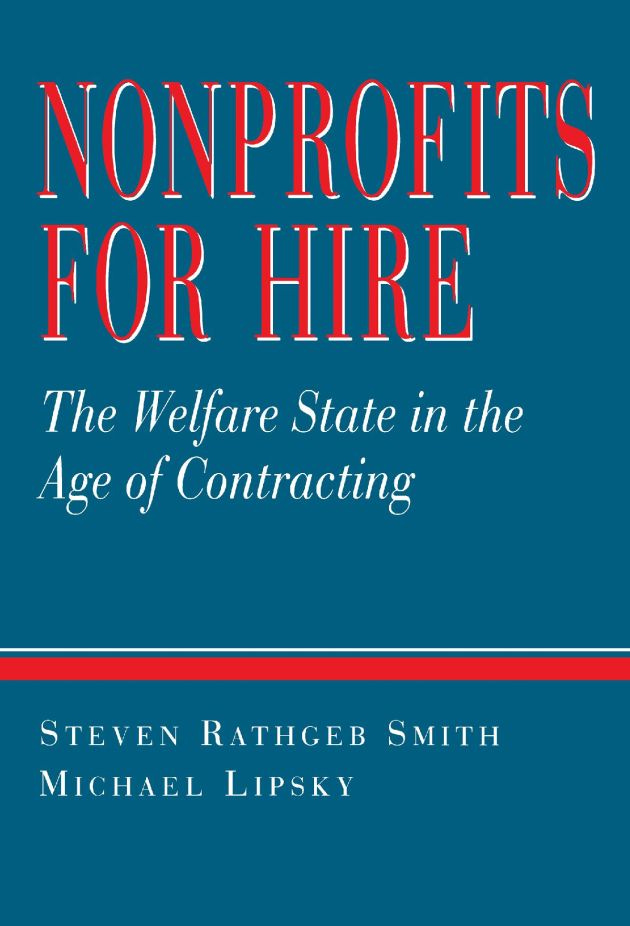I’ve written about John Maynard Keynes on this platform before - here on his “grandchildren” essay, and here on the founding of the Arts Council of Great Britain and the concept of “arm’s length”, for which I named this blog. I want to say something new, and the political situation in the US calls for something on the arm’s length concept, and so let me take a more meta approach.
But I’ll begin with what he said on the radio when he announced the formation of the Arts Council, July 12, 1945:
In the early days of the war, when all sources of comfort to our spirits were at a low ebb, there came into existence, with the aid of the Pilgrim Trust, a body officially styled the “Council for the Encouragement of Music and the Arts”, but commonly known from its initial letters as C.E.M.A. It was the task of C.E.M.A. to carry music, drama and pictures to places which otherwise would be cut off from all contact with the masterpieces of happier days and times; to air raid shelters, to war-time hostels, to factories, to mining villages. E.N.S.A. was charged with the entertainment of the Services; the British Council kept contact with other countries overseas; the duty of C.E.M.A. was to maintain the opportunities of artistic performance for the hard-pressed and often exiled civilians.
With experience our ambitions and our scope increased. I should explain that whilst C.E.M.A. was started by private aid, the time soon came when it was sponsored by a Treasury grant. We were never given much money, but by care and good housekeeping we made it go a long way. At the start our aim was to replace what war had taken away; but we soon found that we were providing what had never existed even in peace time. That is why one of the last acts of the Coalition Government was to decide that C.E.M.A. with a new name and wider opportunities should be continued into time of peace. Henceforward we are to be a permanent body, independent in constitution, free from red tape, but financed by the Treasury and ultimately responsible to Parliament, which will have to be satisfied with what we are doing when from time to time it votes us money. If we behave foolishly any Member of Parliament will be able to question the Chancellor of the Exchequer and ask why. Our name is to be the Arts Council of Great Britain. I hope you will call us the Arts Council for short, and not try to turn our initials into a false, invented word. We have carefully selected initials which we believe are unpronounceable.
In the last part of the second paragraph he spells out what we mean by “arm’s length”: publicly funded, independent but not entirely - it remains responsible to Parliament. And this became the model for public arts funding in Canada and the US. But why do it this way?
Let’s take a step back and ask: what are the different ways government can organize the provision of goods and services to the public? I’m going to say there are three ways.
First, departments in the executive branch of government can contract with independent firms to provide the goods and services. These firms might be for-profit or nonprofit. Beginning with the expansion of the American welfare state, such as it is, in the 1960s, federal and state governments started contracting with nonprofit social service agencies to deliver services. There are some advantages to doing this: local organizations know their communities and the conditions on the ground better than someone in a government line department might, and can see more quickly when changes in the local environment are happening. They could possibly leverage the government funding to attract private philanthropy. There are also drawbacks: someone in the government needs to manage the contracting process and its fulfillment, and this is not a simple thing - anytime you hire someone to do a job for you rather than doing it yourself you benefit from their expertise but also have to be on guard that they are actually performing the work to the standard to which you thought you contracted. There might be drawbacks for the nonprofit organization as well: it is no longer as independent as it once was, and in its service delivery will now be bound to government standards, including equitable access as defined by the government rather than by whatever have been your traditional clients.
Governments can also contract with commercial firms. Again there are pros and cons. Commercial firms have lots of incentives to find innovations in service delivery and cost control, since those innovations mean they win more contracts and more profits. But this is only going to work where the service delivery is something that is straightforward for the government and the firm to write down in a contract and then easily observe the outcomes. Nonprofits are a bit more trustworthy in this respect, since internally there are no “owners” who can take home extra profits. So, nonprofits are best for contracting where the quality of service delivery is not really easy to observe, and where innovation is not all that important.
Second, government departments can simply do the service delivery within the department. So, for example, the US Department of Agriculture could contract out food safety inspectors, but it could also have employees of the department do that job. When would it be smart to keep things in-house? If the job is highly sensitive, probably best not to contract out. I’ve always liked this article from Oliver Williamson on contracting out - he uses the example of the State Department, where you would never1 contract out your diplomatic corps given the sensitivity of keeping information and performance in-house. Different countries do things different ways: I have a friend who once played horn for the Barcelona Symphony, and he was a government employee, on government pay scale and all the rest.
Third, governments can create what we now call arm’s length agencies: funded by government and within the public sector, responsible to the legislature and managed under the authority of the executive branch (the Indiana Arts Commission operates through the Office of the Governor, and is funded by the General Assembly, for example). Their mission and scope are determined through legislation, and the agencies then fulfil that mission without direct management from the executive branch, but with a duty to report, and which can be called to account should it be seen to be straying from that mission and the intent of the legislature.
Conflicts often arise. Public schools generally operate through arm’s length school boards, and those who want to dismantle what was one of the greatest success stories of the twentieth century claim that contracting out to independent schools (which might be nonprofit or for-profit) would yield superior outcomes.
Contracting out of prisons - for an academic treatment (with a few econ theory parts, but you can get the gist) see this great piece by Hart, Shleifer and Vishny - has led to complaints of abuses, ones for which it is difficult to find redress: if someone you care about is incarcerated and tells you stories of abuses in the prison, who do you call if the prison is run by a private contractor? How can all aspects of the treatment of inmates be written up in a contract in the first place?
What is going on in Washington now? If I understand correctly (and, honestly, I might not), the Republicans have come to conclude that neither government departments (the “deep state”), nor arm’s length agencies (Elon Musk described USAID as a “criminal organization”), nor contracted nonprofit agencies (Lutheran Family Services was described as a “money laundering organization” by one of the crazies) can be trusted. The accusations are over-the-top, and raise the question of why Mr. Trump in the four years he was in office allowed all these criminal activities to carry on.
But it leaves the question: if not government departments nor arm’s length agencies nor contracted third parties, who is left to deliver public goods and services? Shutting them all down is, I suppose, an option, but as with many of their half-baked ideas, they will quickly come up against reality: is nobody going to do food safety inspections, manage forests, maintain public infrastructure, run all the various aspects of our justice system, or defense, or revenues? Somebody has to do it. Americans are a politically diverse lot, but Anarchy, State and Utopia libertarians, with an absolutely minimal state and all the rest left to the private sector, are very few in number, and I doubt the coming chaos is going to garner many recruits to the cause.
Here’s the rub: large complex organizations require delegation of authority, and with widely dispersed, privately-held information there are some who will use their delegated authority to pursue private ends, and not what the chief executive intended. These private ends might be selfish, or they might align with what the agent sees as the “true” public interest. But it happens. Many readers of this piece either have worked in or currently work in universities. You’ve seen it yourselves. Did you devote your day to first doing a quick re-read of your school’s strategic plan and then asking “what can I do today to advance the goals articulated by my college president?”
Bureaucrats in government departments will try to nudge their cabinet secretary towards what goals the bureaucrats think would work best - that is the whole point of the ironic joke in the title of the series “Yes, Minister.”
Management in nonprofit organizations must follow board of trustees directives on the mission of the organization, but management and staff will often try to nudge programming towards their preferred goals. Life in publicly-funded arm’s length organizations will be the same.
Large complex organizations, with a separation of ownership and management, are going to have all sorts of agency problems - this is true in the corporate sector, in nonprofits, in government, and even in Silicon Valley. It’s a core topic in any management degree - it’s not a brilliant new discovery by Elon Musk and the teenagers working for him. You have to make do as best you can, through reporting structures, information sharing, and well-considered incentives (I will come to the topic of bad incentives at the letter Q). After all, citizens put their trust in government to enact policies in the public interest - the government itself is the “agent” in this principal-agent problem - the public doesn’t really have much choice in this matter.
I’m with Keynes: the “arm’s length” structure often strikes a nice balance between the government funder setting the mission and parameters of the organization, which is then given the independence to make internal judgements and bring in expertise from outside the formal state bureaucracy. I have served as one of those external people for different arts councils, and also worked on a USAID-funded project, doing workshops on public finance - value-added taxes being my niche - for treasury officials from developing countries. And as I think readers of this blog have gathered, I am not a radical Marxist.
The distrust in arm’s length agencies we see in US government right now is doing more harm than good. Public universities are a classic arm’s length firm, but red-state legislators are increasingly under the impression that what is needed is more micro-management - my Indiana University is experiencing being slowly chipped away by a state government that has little understanding of how universities work, and little interest in thinking deeply about it.
Public funding at arm’s length is not perfect. There will be foreign aid projects that go awry, academic research partially funded by the National Endowment for the Humanities that seems a bit silly, art partially funded by the state arts council that has at least a few people asking, “my tax dollars paid for that?” But I don’t think there has been found a superior method of arranging things, and on balance the allocation of public funds passes a cost-benefit test, even if there’s always going to be some politician who asks why the government is funding research into the mating habits of porcupines.
Peer review, and drawing in expertise from outside the bureaucracy, is the worst system for deciding which projects to fund, except for all of the others.
I can’t tell how much ruin is about to be brought to the US government and the people it serves with the current attacks on its agencies - I can’t tell what the situation will be tomorrow morning much less in the long term. But I will hope that eventually there will come a time when it is realized that you just have to be willing, with appropriate means of verification, to trust each other.
Coda: I went through a period of trying to write about these questions systematically, inspired by Avinash Dixit and others to apply the “transaction cost” approach to politics to arts funding, though I’m not sure I was all that successful. Anyway, here is “Transaction Cost Politics and the National Endowment for the Arts” (Poetics, 2003) and “Political Oversight of Arts Councils: A Comparison of Canada and the United States” (International Journal of Cultural Policy, 2002). As always, if your library doesn’t have these but you are interested, I’m easy to find, just send an email.
Codetta:
It actually might be wise in our current situation to never say never…









May I respectfully add a footnote. While this article uses “arms’-length” in what is now the conventional understanding of the phrase, this is not the original definition in law. An arms-length relationship is one where there are two independent parties, neither one of which has power or influence over the other. In Britain, where the term in relation to cultural policy originated, this meaning has been significantly lost. There are no longer two independent arms, belonging to two independent parties, but a single arm. The hand that does the work is the Arts Council, but the arm is the government’s. In the twenty-first century the “arm” has got progressively shorter, to the point where the Arts Council’s independence is a convention, but in practice a fiction. Keynes was happy with the arms-length principle because at that time there was no disagreement between government and the leaders of the Arts Council, as they were essentially the same sort of people, starting with Keynes. Since the 1960s that has no longer always been the case. Today, the arm is very short indeed. Robert Hewison U.K.
Greetings from Team Nozick. (Early Nozick, anyway. Anarchy, State, Utopia was a fairly early work and he reconsidered some of his positions.)
Hannah Arendt wrote, "In a fully developed bureaucracy there is nobody left with whom one can argue, to whom one can represent grievances, on whom the pressures of power can be exerted. Bureaucracy is the form of government in which everybody is deprived of political freedom, of the power to act; for the rule by Nobody is not no-rule, and where all are equally powerless we have a tyranny without a tyrant."
This is where we find ourselves. What Mike Flynn said about Lutheran Services was over the top. But they were regularly receiving eight- and nine-digit sums to resettle immigrants, under an extremely divisive Biden-era immigration policy, in numbers exceeding the population of some US states. Elon just discovered that the Treasury is sending a billion dollars a week to persons with no SSNs. USAID paid $8 million to Politico; Rubio froze USAID and Politico missed payroll for the first time. Victims of the 2024 hurricane season were denied aid because they had Trump signs in their yards. The FBI has 13,000 employees and 5,000 of them were assigned to persons connected to January 6. As I was typing this, a report just came in that FEMA spent $59 million last week to house illegal immigrants. That was against the law. The scale of fraud, insubordination, partisanship, and self-dealing throughout the governing structure is cartoonish.
I don't think it's the case that Republicans disdain any theoretical form of service provision. They disdain what's being done with the actual ones. They doubt, reasonably, that reform is possible. So instead they're hamstringing the agencies responsible for the chaos. That's going to injure some laudable efforts, but by the time American taxpayers have funded transgender comics in Peru, that's not a salient objection.
If you have rational and moral actors all over the system, any of the arrangements you describe can work fine. The problem is that you can depend, like the sun coming up tomorrow, on there not being rational and moral actors all over the system. In that the conservatives were more correct than they were about anything.